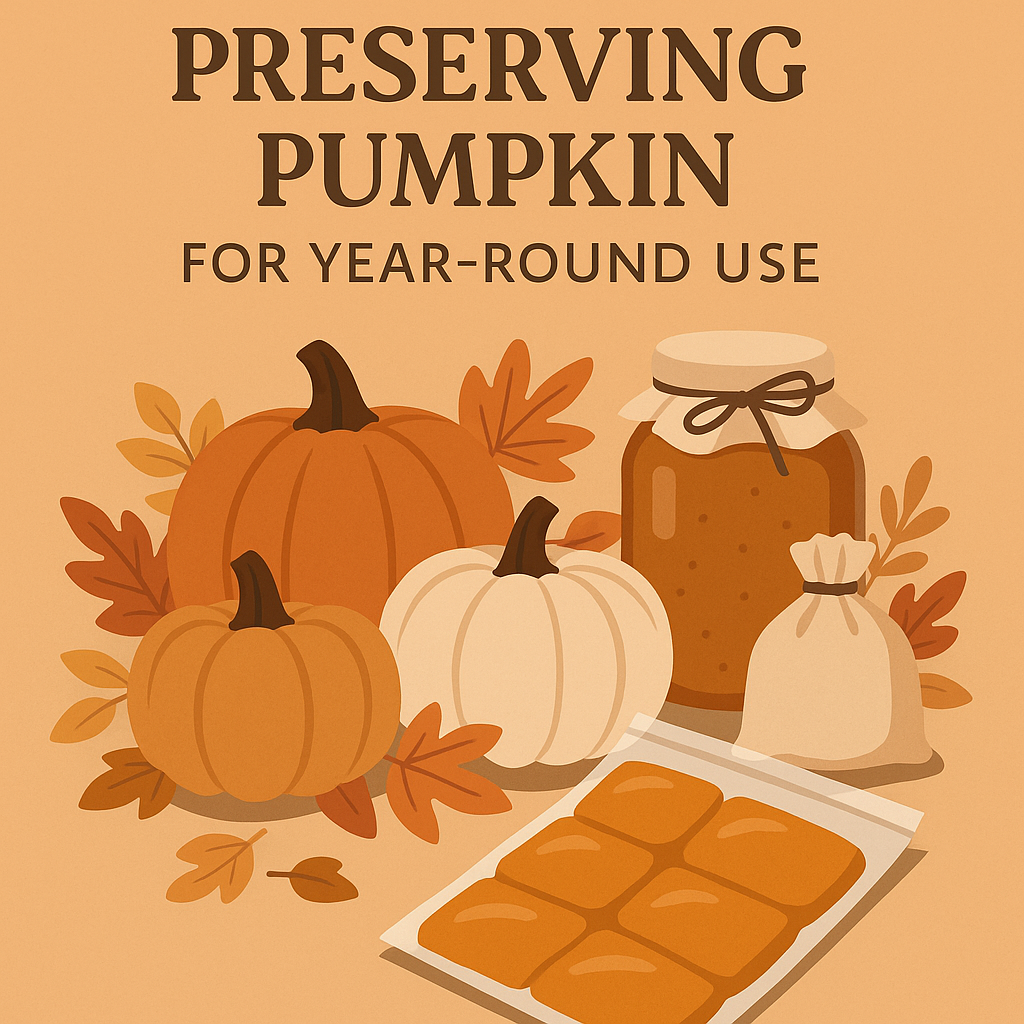Preserving Pumpkin for Year-Round Use

Preserving Pumpkin for Year-Round Use
There’s something magical about enjoying homemade pumpkin pie in the middle of summer or adding fresh pumpkin puree to your winter soups. While pumpkins are traditionally a fall harvest, with proper preservation techniques, you can enjoy their rich, sweet flavor and nutritional benefits throughout the entire year.
Why Preserve Pumpkin Beyond Fall?
Preserving pumpkin makes both economic and culinary sense. Here’s why you should consider extending pumpkin season:
Economic benefits:
- Peak season savings: Pumpkins are cheapest during harvest season
- Bulk processing: Process multiple pumpkins at once for efficiency
- Avoid off-season prices: Canned pumpkin can be expensive year-round
- Garden abundance: Use up your homegrown harvest
Culinary advantages:
- Better flavor: Fresh pumpkin often tastes better than store-bought canned
- Texture control: You control the consistency and processing
- Variety selection: Preserve different pumpkin varieties for specific uses
- Convenience: Ready-to-use pumpkin for spontaneous baking
Nutritional value:
- Vitamin A: Pumpkin is rich in beta-carotene
- Fiber: Supports digestive health
- Potassium: Important for heart health
- Antioxidants: Help fight inflammation
Preparing Pumpkins for Preservation
Selecting the Right Pumpkins
- Choose sugar/pie pumpkins: Better flavor and texture than carving pumpkins
- Look for firm, unblemished skin
- Check the stem: Should be dry and firmly attached
- Consider size: Smaller pumpkins are often sweeter and easier to handle
Basic Preparation Steps
- Wash thoroughly with a vegetable brush
- Cut safely with a sharp knife on a stable surface
- Remove seeds and pulp (save seeds for roasting or planting)
- Cut into quarters or eighths for easy handling
Freezing: The Easiest Preservation Method
Freezing is the simplest way to preserve pumpkin and maintains excellent flavor and nutritional value.
Freezing Pumpkin Puree
- Cook pumpkin (roast, steam, or microwave) until tender
- Cool completely
- Puree until smooth
- Portion into recipe-sized servings
- Package in freezer bags or containers
- Label with date and quantity
- Freeze flat for easy storage
Storage life: 10–12 months at 0°F
Note: Thawed puree may be more watery; drain if needed.
Freezing Pumpkin Cubes
- Peel, cube, blanch, and flash-freeze
- Store in bags for soups, stews, and curries
- Best quality for 8–10 months
Canning: Long-Term Shelf Storage
Pumpkin requires pressure canning (never water bath).
Safety Essentials
- Always use USDA-tested recipes
- Only cube pumpkin (never puree or mash for canning)
- Process with proper times/pressure by altitude
- Shelf life: 2–5 years
Drying and Dehydrating: Concentrated Flavor
Dehydrating creates long-lasting pumpkin powder and slices.
- Powder: Blend dried puree sheets → store 2–3 years
- Slices: Dry 1/4-inch slices → store 1–2 years
- Best storage: airtight jars or mylar bags with desiccant
Recipes to Try with Preserved Pumpkin
- Frozen puree: Pumpkin bread, smoothies, pancakes
- Cubes: Hearty soups, roasted side dishes, curries
- Canned cubes: Pumpkin risotto, pies, sauces
- Powder: Spice blends, smoothies, baking enhancement
Year-Round Pumpkin Enjoyment
By freezing, canning, or dehydrating pumpkins, you can enjoy them long past fall. The key takeaways:
- Start with high-quality sugar pumpkins
- Follow tested preservation methods
- Store properly for safety and flavor
- Experiment with recipes for every season
With a little work in autumn, you’ll have pumpkin at your fingertips all year long!